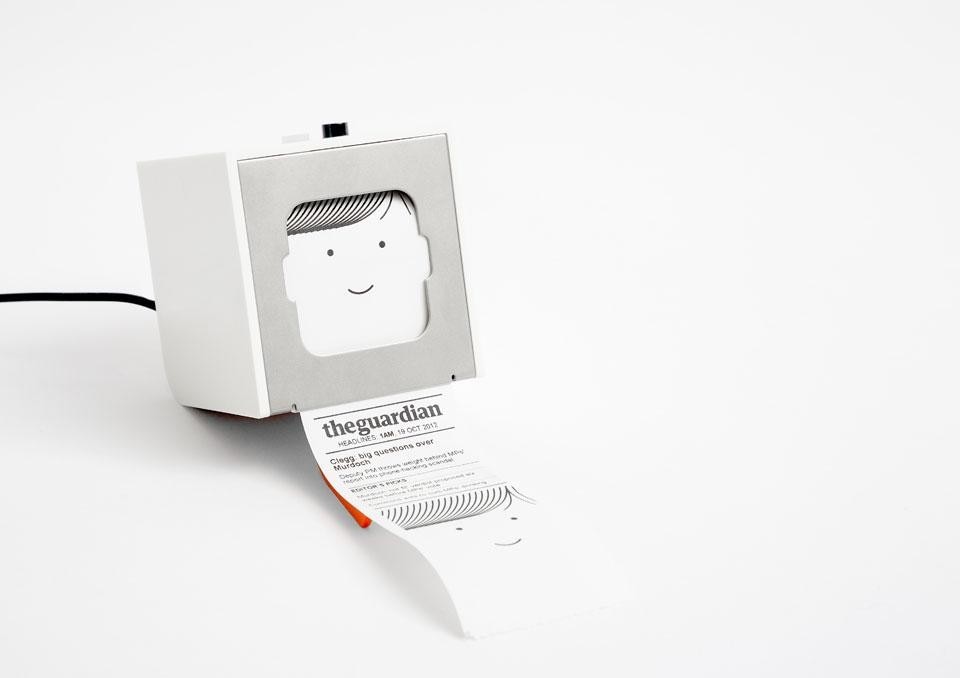Little Printer is a product of now. It is a product, a tangible thing, but is also a product, in the sense of a consequence, of contemporary culture. It humbly and accessibly exemplifies how physical and digital have merged to become one, to become hybrid objects, to demonstrate how objects might become networked, and how domestic objects might behave.
It also speaks of a contemporary design process, and that's what we'll focus on here. Little Printer itself, perhaps due to that innate ability to make clear the promise of digital/physical objects in such an everyday kind of way, has been covered in depth elsewhere, even for a product that only a handful of people have touched at time of writing. Yet the design process, and the culture, that it emerges from is less well-known. Actually this may be the more interesting story. Little Printer will come and go, no doubt, and as a harbinger of tomorrow's products today, will be superseded by one, or several, of the adjacent possibles that it suggests. Such is the nature of this industry.
But Little Printer, whilst a product of now, is also the product of over five years of applied research and development, a wobbly line etched from sketchbook to workshop, from college to startup, from Hackney to Shenzhen. Domus talked to Jack Schulze, a principal at BERG, the London-based firm that produces Little Printer, in order to unpick the design process as much as the product.
Sketchbooks and notes
If it starts anywhere, it starts in Schulze's sketchbooks and Matt Webb's related blog post on the idea of "my printer, my social letterbox". The sketchbooks date from Schultze's time at the Royal College of Art, where he reinvented himself as product designer rather than graphic designer. (He had previously studied at Central Saint Martins.)
That segue from graphics to product is instructive immediately, and also speaks of now. An idea like Little Printer emerges from ambitions in products and physical experiences, but from a backdrop that is screen-based, narrative, graphical. Looking at 2013, this is a perfectly natural position, but still a challenge for many of our institutions, whether education or media. There, discipline-oriented structures may prevent these kind of projects as much as they enable them. While typography and layouts are a form of design predicated on systems of code, after a fashion, few graphic designers are encouraged to move easily from page layouts to code-driven industrial design.
But perhaps as a result of this fluidity of influence, talking to Schulze while looking at those early sketches, his reference points tend to be mainstream narrative formats rather than object-based. This, if anything, might be a core organising principle of BERG's work. While BERG's Matt Webb talks of "everything being transformed by the Network", another trajectory — perhaps running alongside, perhaps another side of the same coin — is this focus on narrative, on behaviour, seeing technology as characters. This is partly through the network, yes, in which social and cultural relationships are now present, tangible and malleable, embedded and embodied within hybrid digital/physical products.
Yet it also through an understanding of how design can create meaning in otherwise operative and often utilitarian relationships between people and things, beyond simple personification — a Citroën's eyelashes, Mendini's corkscrews. Without wishing to overdo it, it is perhaps closer to a sense of animism in non-human objects and phenomena. Put simply, can you articulate the difference in character between a fax machine and a modem, an old wall-tethered telephone and a smartphone, a typewriter and a touchscreen?
Just as significantly, though, there is no denying the influence of comic books and science fiction on their products (as BERG's alleged full name — British Experimental Rocket Group — suggests) and in particular the very British sci-fi found in the likes of 2000AD, Hitchhiker's Guide to the Galaxy, Watchmen et al.
It is perhaps significant that such this cultural backdrop revolves around characterful hardware more than characterful software; the comics of the 1980s and 1990s have one foot in an earlier age of engineering-driven British culture (which also produced the most influential British architecture of the last 40 years) and another in the postmodernist cultural studies of the time. That stew of influences, when eventually multiplied to the nth degree by the internet, is somehow still visible in this cheeky little metal box, quietly sputtering chatter, twitter and asymmetric haircuts alongside weather forecasts, sudoku and Guardian headlines.
This sense of the character and narrative of networked technologies can be seen in BERG's clear precursor to Little Printer, the prototype "Availabot", from 2006, first seen at Schulze's masters show at the RCA. A simple variant on a child's toy, Availabot is a physical character, whose features resemble a particular friend (actually BERG's Matt Jones in the prototype), who springs upright when that person becomes available in instant messaging apps, and who droops down otherwise. Simple as it is, it is nonetheless an evocation of the character of instant messaging technology, and its constructed interface, the peculiar binary bounce between "life" and "death", animated and inert, that iChat, AOL and others overlay onto social relationships conducted over cables.
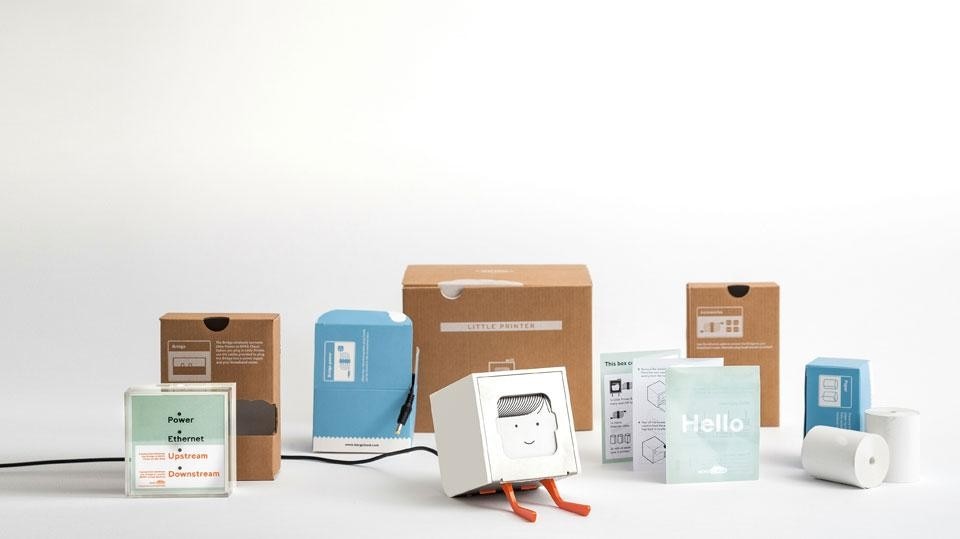
In terms of particular cultural influences, Schulze states very clearly: "Pixar, Apple, Lego, Marvel," none of which are British. Yet at least three of these are in the narrative game, and the other, Apple, is a company that — with varying degrees of success, it must be said — perhaps best exemplifies the mainstream hardware and software corporation's attempt to be personal, approachable, the computer for the rest of us.
So those careful early sketches sometimes look as much Spongebob Squarepants as they do Naoto Fukasawa (two references I've not put together previously, I must admit.) Beautiful strange contraptions, drawn partly under the influence of ex-Apple and IDEO designer Durrell Bishop's teaching at the RCA (in particular, Schulze says, prototypes like Bishop's Marble Answering Machine.)
In a very early sketch, a small printer sits next to a laptop, dubbed "Social Printer". Then page after page of variations on printers that have human characteristics or even failings (paper dangles and spools and is shredded messily on the floor, rather than producing neatly folded piles or simply remaining undrawn.) Some of them are tubby, almost teletubby, Miyazaki-esque characters, far more toy-like than the end result would be.
Talking to almost anyone at BERG, you are as likely to end up discussing Jerry Bruckheimer more than Joseph Muller-Brockmann, Grant Morrison more than Jasper Morrison, Molar Ram more than Dieter Rams. Not that they are ignorant of these others — far from it; BERG, as an post-internet firm who communicate their work in progress, along with the thinking behind it, make their depth and breadth of references clear for all to see.
Schulze is nonetheless clear about what he sees as valuable in this kind of Western culture: its sheer inventiveness. When I ask him how he connects the tone of the demented bombast of Bruckheimer with the quietly discreet Little Printer, Schulze pauses for a beat.
"It comes down to Mary Poppins," laughs Schulze, before embarking on a five-minute design fiction eulogy to his favourite movie.
"Mary Poppins has an incredibly domestic set of superpowers. Her magic is all done with gestures. There are no spaceships or robots. It's all about austerity, family. And although it's an American movie, it's set in a very British context. She works within the British class system and subverts it from within. She destroys the banking sector, reunites the family, but not in an anarchic way."
"She is omnipotent. She can conjure up an army of parkour chimney sweep ninjas! But she also has to come and go with the weather, and where there is technology, if you like, it does not always do what it should. It plays up. The umbrella handle is a bit shitty with her. The toys don't always clean themselves up at her command."
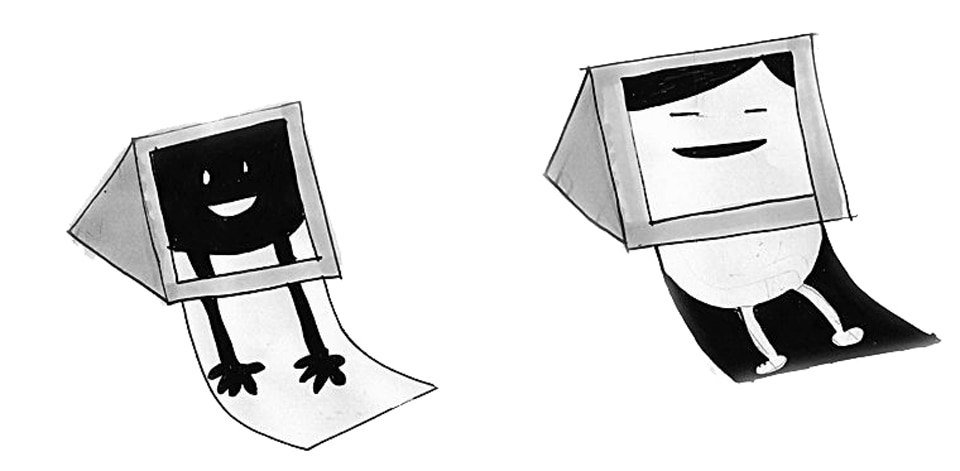
BERG have a particular phrase for the conditions of a particular technology, and how you work with its potential and its limitations. "We're interested in this idea of 'the weather', of the inherent conditions of something. You can think of things having a weather, just as places do, and you usually just have to work with it. If you're a coder, you have to work with the weather of the Amazon S3 server. You just get on with it, working within it. With Little Printer, waste paper is just part of the weather of those objects. If you're Google or Amazon, maybe Apple, you're powerful enough to change the weather of systems — you just lock 40000 Stanford PhDs in a basement until they change the weather! We can't do that, so we have to work with it."
(I resist pointing out that this too is a rather British position.)
Little Printer is, counter to Swiss Army knife devices like the smartphone, rather limited in flexibility. But this limitation is part of "the weather" of the device, of this kind of device.
"In a way, Little Printer is quite monotonous. It doesn't multifunction. It's a display surface, but not a screen. It finds a way of being in your house physically in a discreet way. It manages to be in your social timeline in a way that is playful and personal, but only every now and then. When you compare it to these monstrous LED screens, it's a really humble element to add to your home."
/
This again is why it's a product of now. Little Printer is designed to sit in today's kitchens, living rooms, studios, surrounded by technology from today, the near future, and the near past. It's one notch forward on the dial, but not two. Little Printer doesn't project too far, it is not utopian but it is not dystopian. It doesn't over-promise, it just delivers. "We opt to be part of the cultural landscape. We're obsessed with these ideas of the near future, of the universe next door, by extrapolating peculiar edges," Schulze says.
Little Printer relies entirely on the internet making previously arcane information readily available
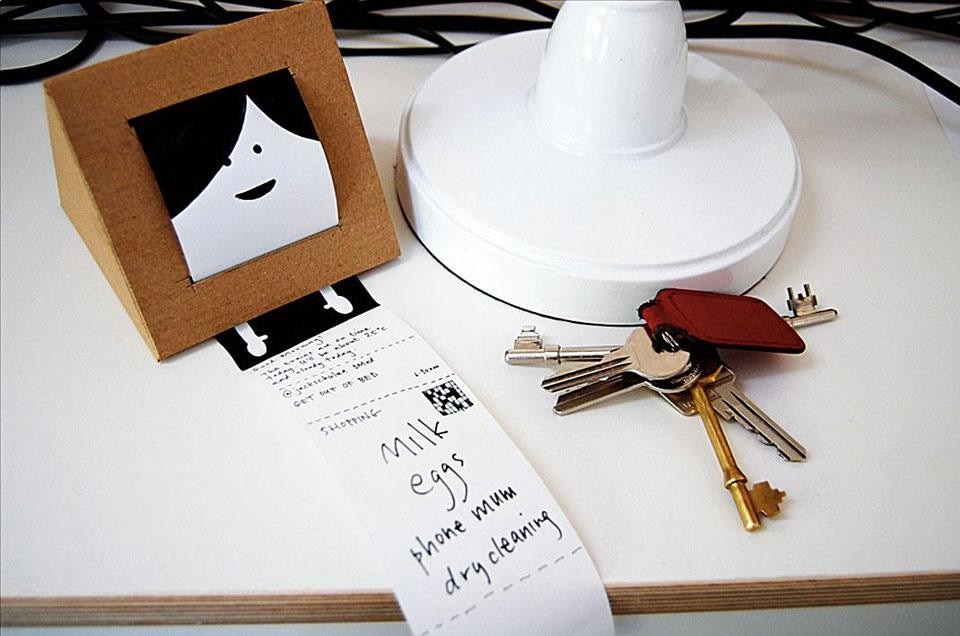
Indeed, in shooting for an overarching universal politeness in general it ends up being impolite in particular, somewhat ironically. BERG's work seems critically suspicious of this utopian view of technology as inexorably about progress, about creating some kind of gleaming seamless future. Partly, as Schulze says, because "utopia is deeply obvious, leaving aside the fact it won't happen. We're not interested in this idea of the invisible technology in a modernist sense. Tech won't be visible but only if it's embedded into the culture that it exists within. By foregrounding the culture, you background the technology. It's the difference between grinding your way through menus on an old Nokia, trying to do something very simple, and inhabiting the bright bouncy bubbly universe of iOS. The technology is there, of course, but it's effectively invisible as the culture is foregrounded."
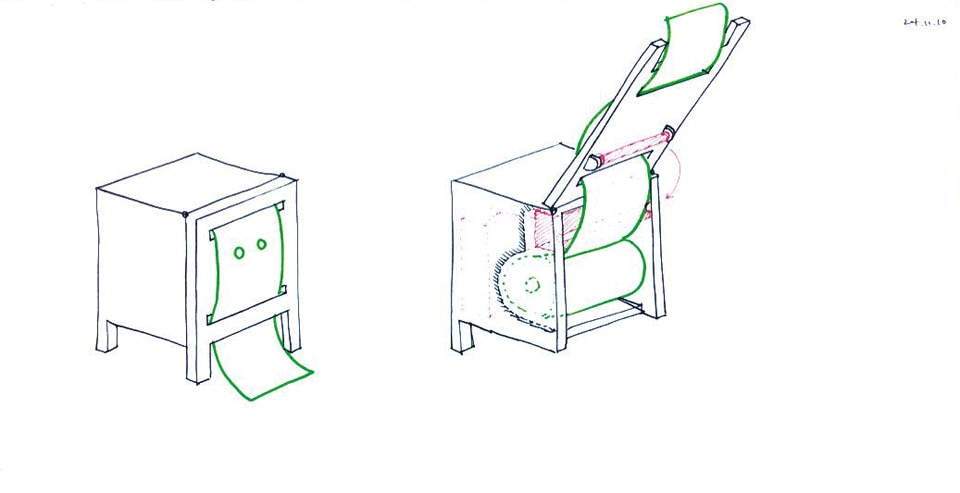
But this deep emphasis on making the Network come alive in objects suggests not simply a new class of product but a different kind of design process as well, a different way of thinking about design that foregrounds narrative, character and interaction in objects.
In another precursor, Matt Webb's 2006 post on "social letterbox", he describes how "new social interactions around the printer now influence its form." Schulze's sketches also illustrate this formal exploration centred on folding character into responsive objects — by giving a printer a face, its expressions can change in response to events; by giving it a haircut, its hair can grow. This feels like the simplest, almost tentative embodiment of this idea, as befits an attempt at a mainstream product for domestic use. But they also reflect the limits of today's domestic hardware. As BERG decided to organise not just the design, but the prototyping, manufacturing, sales and distribution themselves, they are working within the very real constraints of safety standards, of storage, of postage. This implies a different design process, and a different footing for the design firm, increasingly developing their own products.
Paul Thompson, rector of the RCA, tells me that around 60% of his graduates now say they intend to start up their own businesses when they leave. They don't all look to work for Samsung, Givenchy, Toyota, Phillips or Siemens, but themselves. This is a radical shift on a few years ago, and partly down to the Kickstarterisation of the design business, and partly due to the hegemonic pull exerted by "the startup". But, at a more basic level, it's also another form of Internet-driven disintermediation. At Coudal, they do not simply work as design consultancy, but make their own products like the highly successful Field Notes. 37 Signals make their own software, like Basecamp, and produce books on how that changes the firm, rather than simply writing code for others. And a company like BERG can now, with significant levels of ambition it must be said, produce much of what used to be vertically disintegrated for small companies.
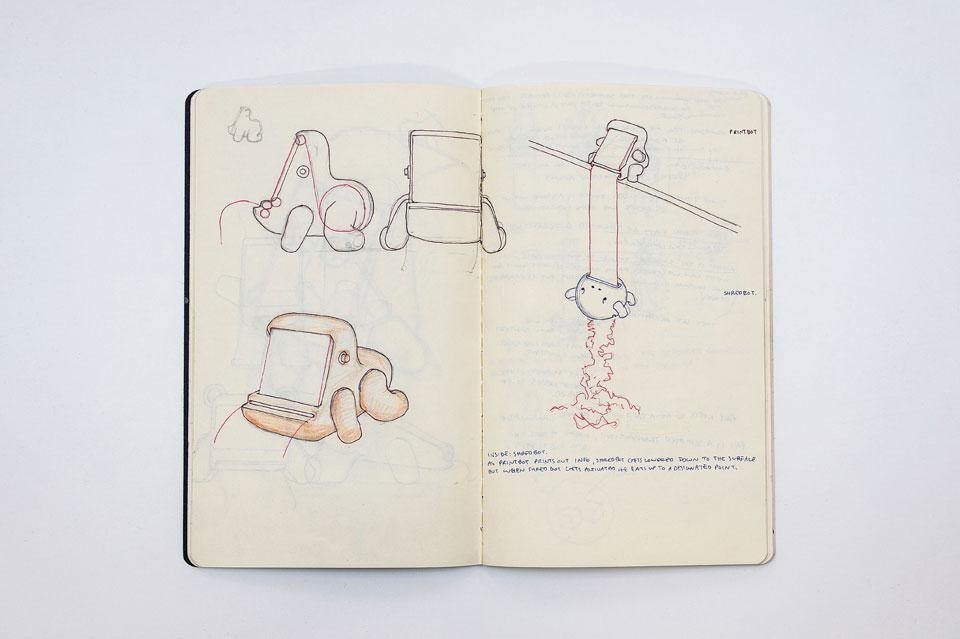
Alongside this sketching in Moleskines, the project progresses slowly, over years, through hardware as well. Schulze, Andy Huntington, Nick Ludlam and others at BERG were hacking the hardware in much the same way that the sketches emerged: bit by bit, in dead-ends and false-starts, in exploratory Heath-Robinson-esque contraptions.
The hardware equivalent of Schulze's sketchbooks are a battered cardboard box on a shelf of BERG's workshop storeroom. The box contains a jumble of plastic bags of electronics components, basically the fossils of Little Printer's ancestors, stapled-together print-outs of PDFs of component documentation, a circuit board with a till-printer attached, the first "end-to-end" for Little Printer, with a papyrus of till receipt paper still in it. The paper displays a low-res print of Andy Huntington's teeth, revealing an experiment in trying to get these mundane utilitarian printers, designed to churn out the product of shopping lists, to draw faces and shapes. There is no casing, just the innards, and Schulze has to support it delicately, like a cat's cradle across his fingers, as it is connected to a mechanised paper shredder component (another consistent theme in early sketches that never made it into the final Little Printer.)
Schulze unfurls an early test print showing how the bar of an upper case "A" is paler than its uprights, as the thermal component in the printer can't generate enough power to make a consistently deep black across a horizontal shape. Lower down the roll of paper is a face whose eyebrows are lighter than its nose or eyes, for the same reason.
"That's material reality!", Schulze laughs. "You realise that, you can't just say "In the future all televisions will speak to you, because they'll recognise your face', because it turns out that if you've got a beard, or the resolution of the eye placement is too coarse, it won't work." This sense of the contingent in digital/physical hybrids can only be truly derived from hands-on experience with messy making, and the difficulty of working in atoms as well as bits. (And perhaps this revelling in contingency and incompleteness isn't just an outcome of the craft, but also reflects that satirical strain of British sci-fi at 2000AD again — Walter the Wobot rather more than the Terminator — a discomfort with hubris, with claims of perfection.)
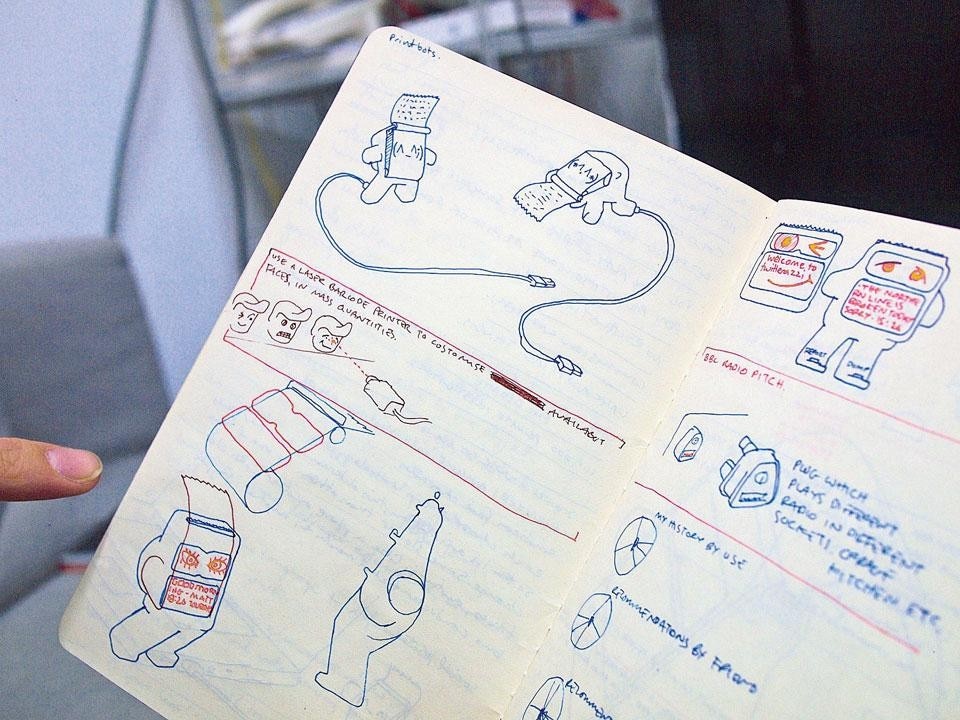
As a result, you now have to seriously question the value in producing designers that don't "do" electronics, that don't "do" code. Again, this is a challenge for mainstream design education that, despite the advances of the last decade, still tends to separate physical form-making from coding, software from hardware. Just as it is a challenge for a traditional design media that cannot speak of code with any authority. Balancing the "creative generalist inventor", like Schulze, alongside the deep craft expertise of someone like Ludlam is a challenge for the contemporary firm, but also education.
Equally, however, designers themselves can adopt these new possibilities quicker than ever, given the inclination. Schulze points out that Little Printer relies entirely on the internet making previously arcane information readily available, of tracking down documentation for individual hardware components sourced from trade fairs and online dealers. Schulze again points to the influence of Durrell Bishop who, chronically averse to hype, would obsessively find out how things work, deconstructing them to understand the "weather" of systems, as a way of getting under their skin.
"Every single electrical component has a PDF explaining its operation, and Google will find It for you."
But building for manufacture is something else again. Availabot has still not made it to market, but BERG did get it "factory-ready", using it as a kind of design probe sent into the opaque body of the manufacturing sector, to gather intelligence about that process, that culture and its capabilities. It was like one of Bruce Sterling's spimes, but in reverse — a naive object that accreted metadata through its journey through manufacture, rather than being born into it.
For a mainstream domestic product, boutique manufacture would not do. So they BERG had to understand how to access China's productive power, mainly via sending in Huntington, as a secondary design probe in human form, to find out. Some years later, he has the weary eyes of someone who has spent months trying to read and understand that landscape, but Andy Huntington can now speak Shenzhen.
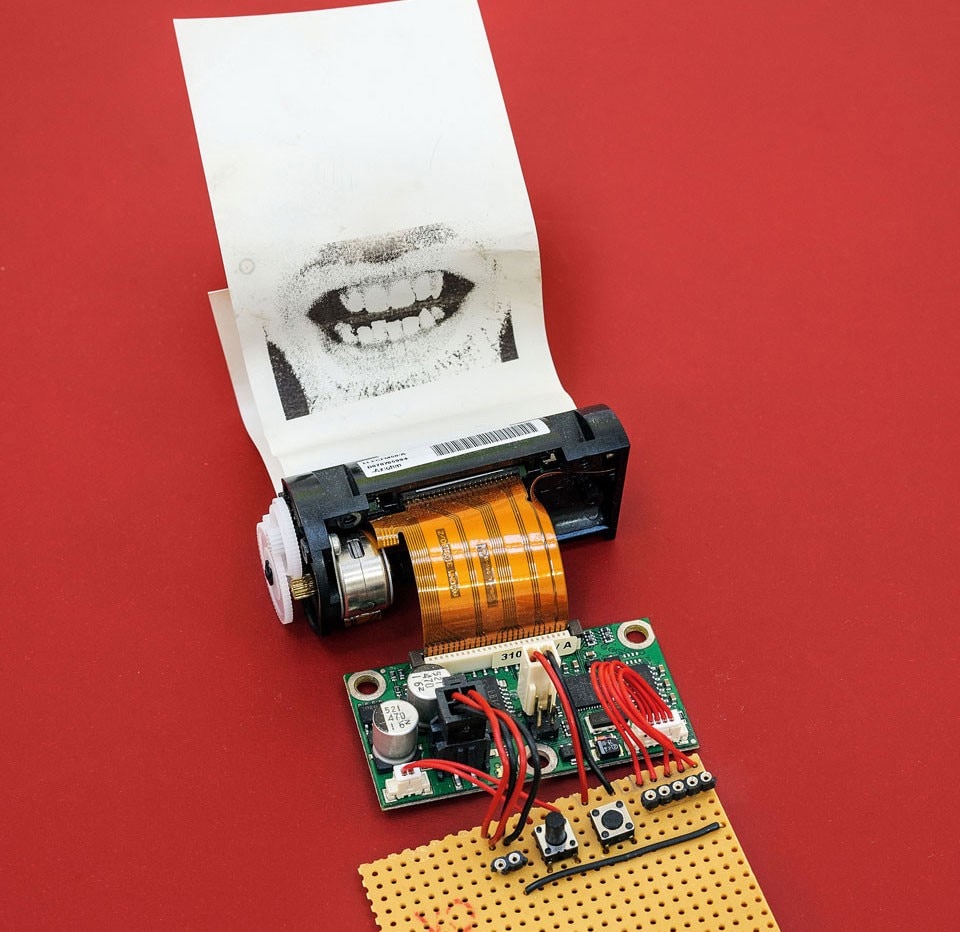
Schulze shows me a Keynote presentation produced by Matt Brown — then of BERG, now at Apple. It's a document called "NEW BRITISH MODERN", fleshing out the aesthetic foundations for Little Printer, and very directly sketching out the product as an outcome of Britishness. Not in a "James Bond and the Queen in a helicopter" kind of way, but more subtly, with colour palettes, forms, conditions. As a document, it's partly just the flotsam from a design process but it's also an extraordinary act of curation, almost the DNA of what would be a great exhibition. It's images and movies peppered with little notes-to-self like "calm radii, human forms but industrial processes, little tapers, warm earthy oranges, geometric but not cold …", annotating a roll-call of reference points, drawing freely from the last century, and which if not all strictly British in provenance, certainly are in influence. Some of it predictable, some of it unlikely, all of it poetically accreting to build a highly consistent yet rich identity.
The Velodrome, Robin Day chairs, Barber Osgerby lamps, everything in Canteen restaurant, Eley Kishimoto colours, Timorous Beasties prints, David Gentleman for British Steel, David Mellor's cutlery, Design Research Unit, Oliver Postgate's Bagpuss, Caslon and Plantin, Kinnear and Calvert, Saville and Garland, the snapping jaws of the cashtill in Open All Hours, the way Postman Pat's van moves, the 1970s BBC Two clock animation, particularly the second hand, Lemon Jelly's "Soft" video…
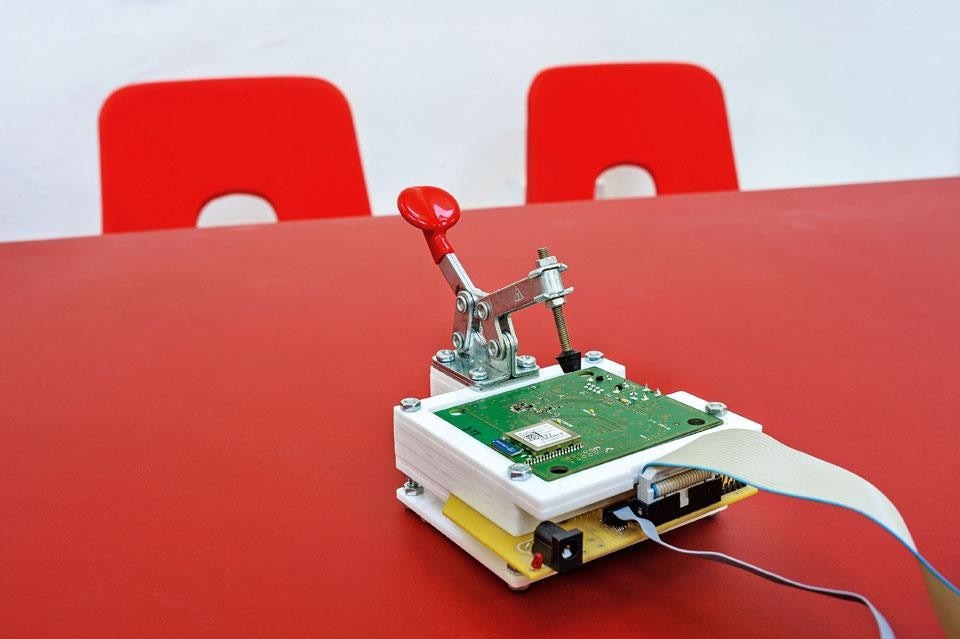
At this point, a surprise. Schulze reaches behind the laptop to reveal that the "body-double" in these Little Printer iterations is Bruno Munari's 1957 Cubo ashtray. While it was a handy size, no pun intended, in retrospect it makes perfect sense that Munari pops up at this juncture, recalling BERG's area of enquiry into objects with character. Cubo itself is a decoy, though; there are instead echoes of Munari's Useless Machines, or his wittier drawings, even his children's books.
It's also no surprise to see that the model for Little Printer's "feet" were the arms of a pair of spectacles. Spectacles, as that most ancient and intimate wearable technology, were another fine choice of modelling material. Was it deliberate? Incidentally, although Google Glass is also clearly a digital/physical object, it doesn't yet have this character or wit, particularly compared to the way these inert snapped spectacle arms and protruding buttons convey a humanised object in much the same way that child's toys do — and yes, Munari did, and Pixar does.
Little Printer's spindly articulated legs and the protruding buttons are partly where its character resides, with those orange plastic arms also reminiscent of a wonderful little El Ultimo Grito toilet roll holder from the late-90s, which was also European work produced in Britain.
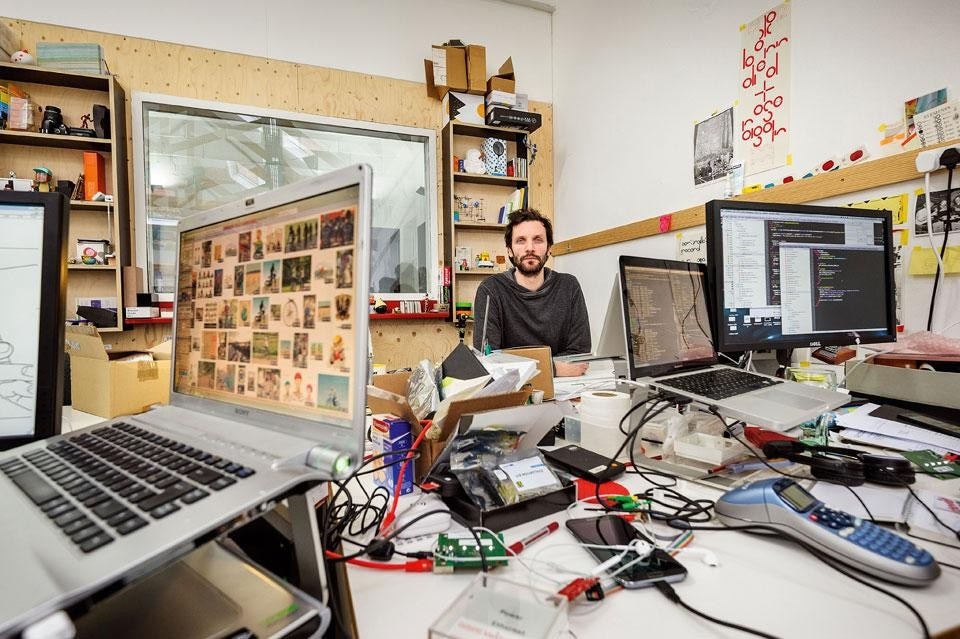
Konstantin Grcic [1] believes a "machine is beautiful when it's legible, when its form describes how it works. It isn't simply a matter of covering the technical components with an outer skin, but finding the correct balance between the architecture of the machine… and an expressive approach that is born out of the idea of interaction with those using the object." Little Printer is certainly framed in this light, even if the affordances for handling those new social interactions must be located elsewhere.
Either way, this is a quite different strategy to Jonathan Ive's apparent desire to spirit away much of the physicality in interaction. Little Printer is almost as far from Bret Victor's sharp critique of contemporary interfaces as simply "pictures under glass" as it's possible to get — pictures, yes; glass, no. Through articulating its supports and buttons, it's reminiscent more of Richard Sapper's splendidly idiosyncratic Tizio lamp — struts in a perpetual balancing act, snapping red switches, somehow awkward and elegant at the same time — than the attempts at seamless minimalism usually unthinkingly perpetrated in tech products.
In other iterations, the spectacle arms were replaced by scissors handles which, as Schulze points out, are also a "highly familiar object, speaking to hands as spectacles speak to the face and ears." Earlier mockups also depict Little Printer as a wooden wedge. They're appealing in themselves, but as Schulze points out, despite having faces, and haircuts, they lose their character. Although the legs might appear on the paper, for the body to work as a body, it needs legs.
These characterful elements emerge from the formal interplay between BERG and Lucky Bite, but also from BERG's Denise Wilton, who deftly designs much of the visual framework that emerges on paper from Little Printer. Her desk is surrounded by print-outs of the faces "within" Little Printer, with more hair styles on show than a copy of Grazia magazine. The significance of the hair is beyond style — although its clearly one of LIttle Printer's more instantly appealing aspects — but as a nod to something organic, growing, it again reveals the Tamagotchi-like thinking behind the product.
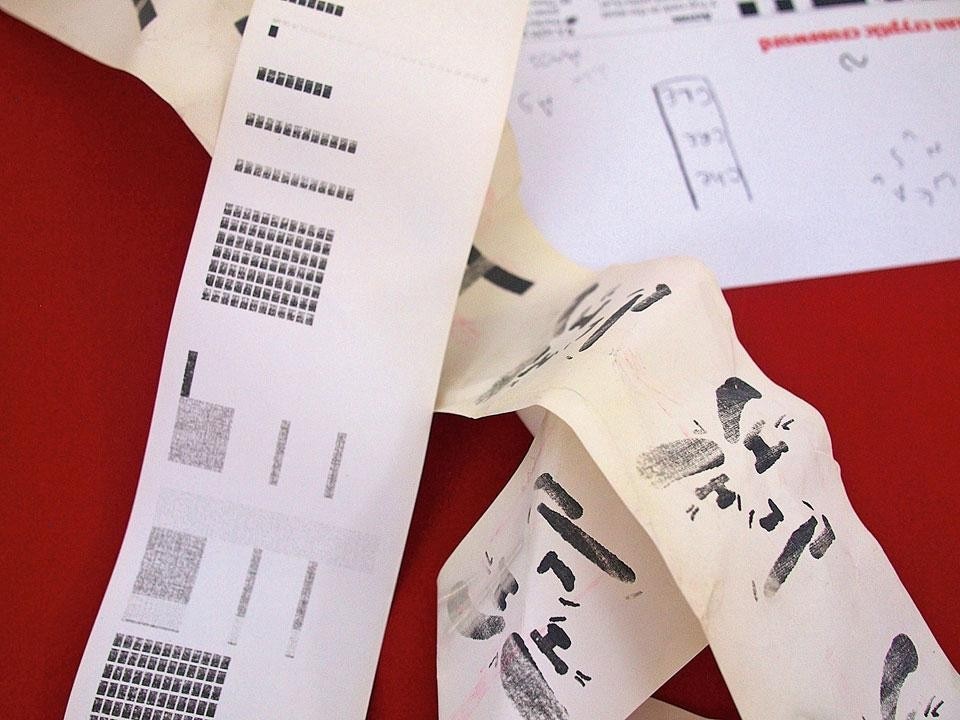
To come full circle, and in the language of industry, BERG's design process must include manufacturing, promotion, sales, logistics and customer service. But as a Networked product, there is a further strategic play. Little Printer, for all its subtly plaintive appeal, may be something of a Trojan Horse. The device relies on a BERG Cloud connection, via a small box that plugs into your wifi and feeds data to Little Printer. This is also, rather smartly, a content gateway that might connect all kinds of subsequent devices as well, enabling you drive the various patterns of data that articulate your life to the array of connected devices through the home, office, street. BERG describe it as the "nervous system for connected products"; this translates roughly as something that smuggles the firm, in platform-mode, into all kinds of interesting places.
And that means that there is content syndication to deal with too. Little Printer also has to have an iTunes-like platform for publishing, distributing and managing feeds on and off the device, as well as legible documentation for content creators like Twitter, Arup and The Guardian. When designing Braun hi-fi, Dieter Rams did not have to reconfigure the music industry, to think about where and how radio, and vinyl and tapes might come from. But that is the promise of these new products: that you can, and probably must, address both the "matter" and the "dark matter" surrounding experience. But in order to make these holistic products, the practice has to expand, well beyond design into something more expansive. There's no good word for it. If the notion of "design" is to preserve any meaning, Schulze wonders whether we can even talk about this as "A Design Process".
"It's becomes this vague idea of 'tech entrepreneurship', but it's not really that either", he says. "It makes hiring difficult", he mutters.
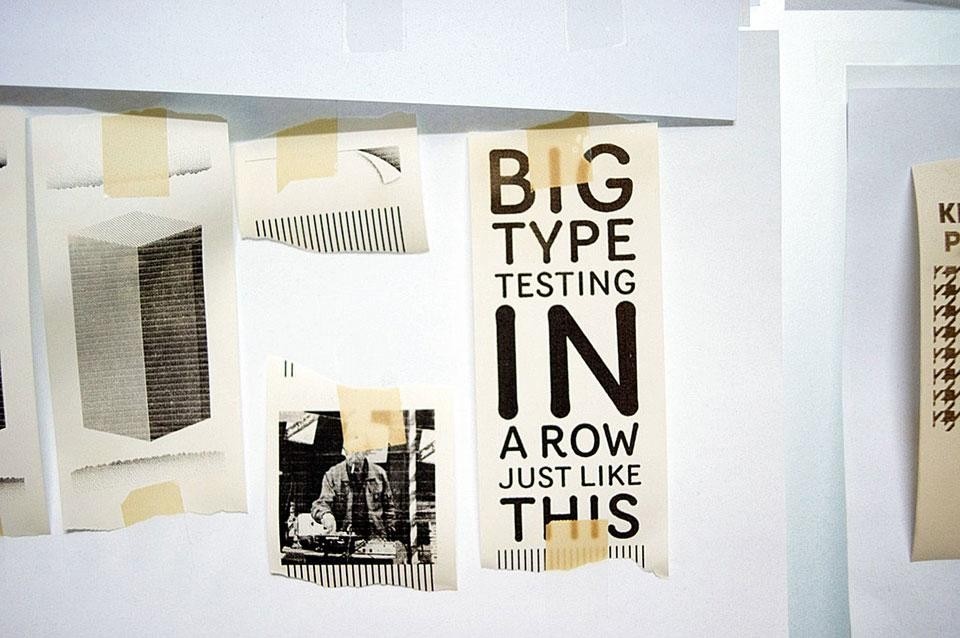
It relies on a particular tone of voice for the design process itself — open, accessible, humble and constructive — that must be calibrated just so, in order to offset negative responses and bring customers inside the manufacturing process, at least a little.
This "tone of voice" is also evident in the videos for Little Printer. It's now obligatory to do video in this field. CIID kids do video for breakfast. About their breakfast. Apple's irritating little product pitches have infected virtually every social media product pitch to emerge from the US in the last few years. But through early research products, like Mag+, Swappu and Making Future Magic, Timo Arnall, who works at BERG as well as AHO in Oslo, has refined a house-style that sets it apart from their competitors, for the moment at least.
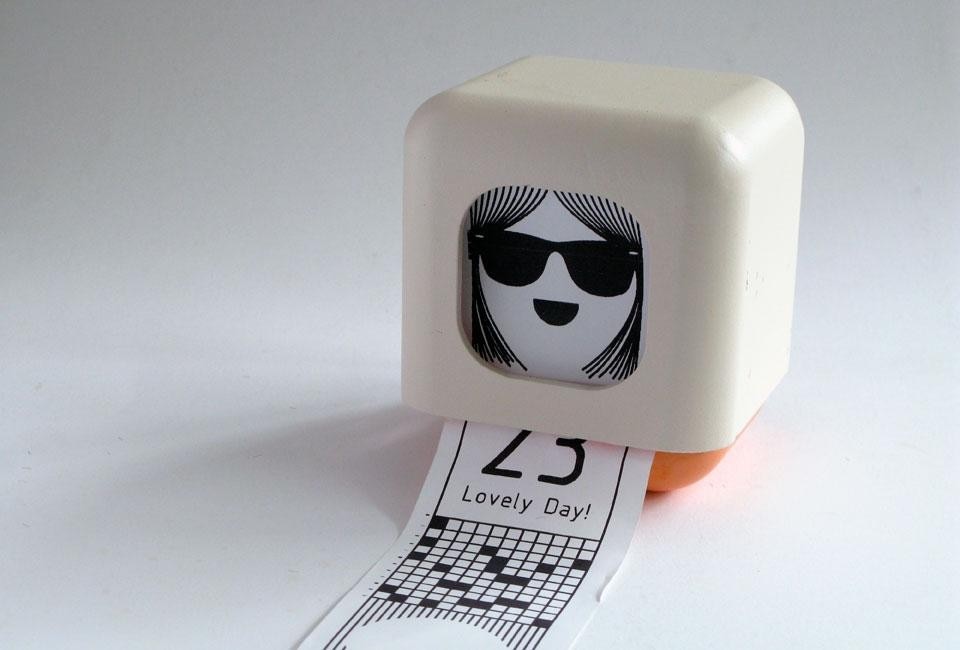
Yet Little Printer is now, not fiction. It is not Continuous Monument but static product. There are thousands of the little buggers, wrapped in plastic, entombed in boxes, stacked in piles, sitting in the hold of some container ship slowly gliding across the South China Seas. As with anything vaguely "uncanny valley", it's odd to think of the devices sitting silent in these metal caverns, utterly inert. They have a form of potential social energy, waiting patiently for power, then to handshake with a router, open a connection with an API, suck in some data, and then, every now and then, transform these almost imperceptible flows into a inky patterns on smoothly unfurling rolls of paper. In this, in both their journey from sketchbook to Shenzhen and back, as well as in drawing out the connective tissue of our contemporary social organisation, they are emblematic of today.
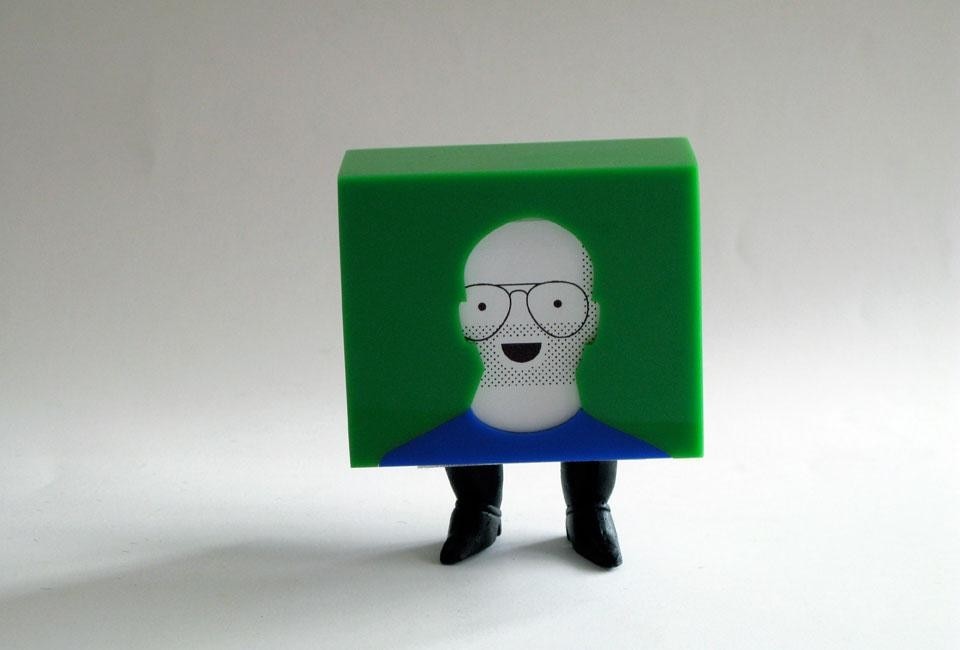
Yet in the end, when we observe its behaviour, it is physically of its time — its form has been influenced by the new social interactions, as Webb put it. It looks and feels like nothing else before it. Though we might line it up after telegraphs, fax machines, printers and smartphones, it is something else. In being a genuinely hybrid digital/physical product — and as BERG's Matt Jones points out, there is no difference anymore, there is no separate "cyberspace versus IRL" — it is entirely a product of now.
One might observe Little Printer and sketch out a number of possible trajectories for characterful products shaped by The Network, but really, who knows? While it is a small, humble addition to a new domestic landscape, Little Printer comes from a transformative maelstrom of productive forces, as electronics and code become mainstream creative tools, and as the patterns of living and working implied by the internet continue to take over. Is it a sketch of what follows, or will a younger generation, the likes that BERG's principals now teach at the RCA, produce something entirely different? Again, who knows?
Though we need products to help make abstract thought tangible, it may be the design process here is the more generative space. That's if we can continue to talk of it as a design process. The Big Question implied by Little Printer is how the practice of design itself changes as a result of The Network. Dan Hill (@cityofsound), CEO of Fabrica
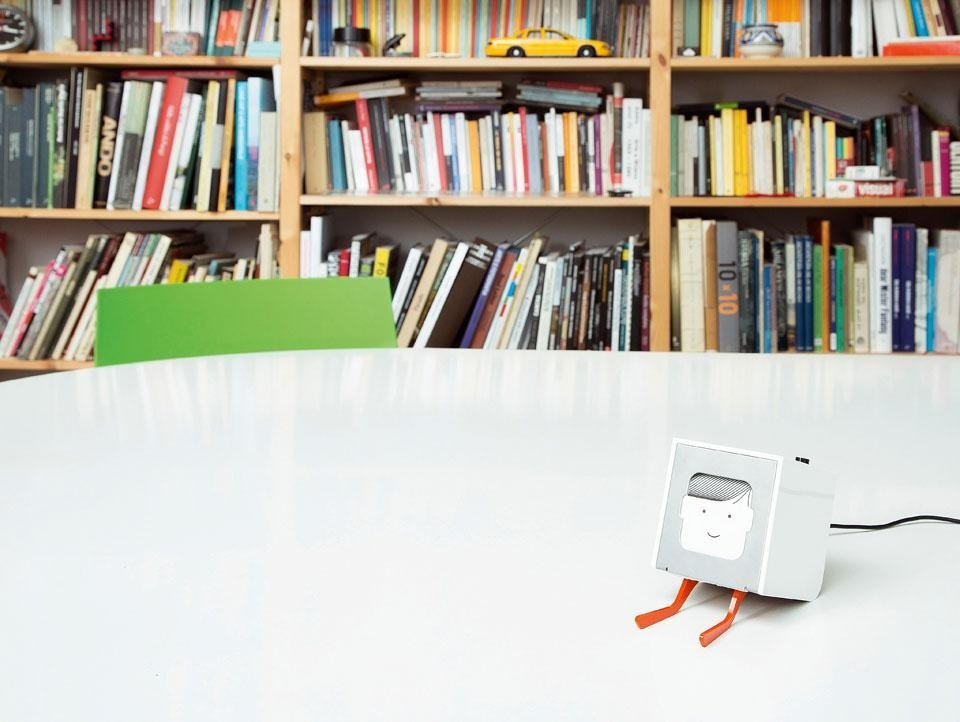
1. Konstantin Grcic as quoted in Francesca Picchi, "Designing Close to Life," in Konstantin Grcic Industrial Design, ed. Florian Böhm (London, Phaidon, 2003), 234. Found in The Transdisciplinary Studio, Alex Coles (2012, Sternberg Press) .



